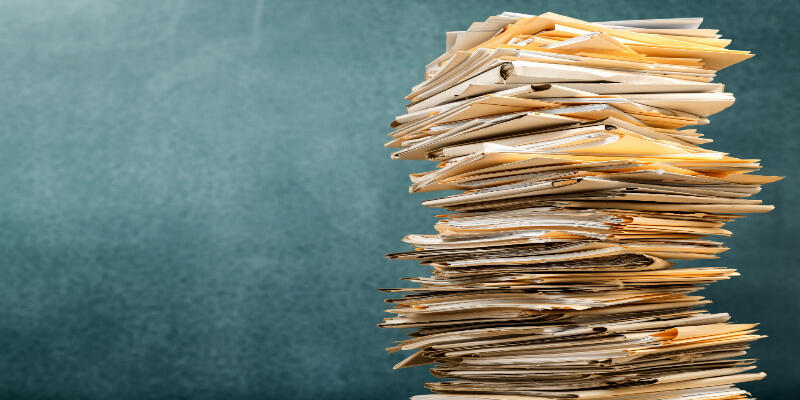Disclaimer: This post may contain affiliate links, meaning we get a small commission if you make a purchase through our links, at no cost to you. For more information, please visit our Disclaimer Page.
Many PC users don’t want their computer hard drives to crash. A hard drive is one of the most important components of a computer. It stores all files, software, and operating systems. So, when a hard drive crashes, you’ll lose everything stored in your computer. But there’s another problem that you can encounter with a hard drive. It’s about the storage space that remains full even though you deleted the files.
If the hard drive is still full after you delete files, that shows that a virus or a file is taking up space. It’s also a sign that you didn’t delete temporary files or that you didn’t empty the recycle bin. You can quickly fix a low disk space by using cloud-based storage.
If you’re experiencing the same problem, here are the simple solutions. It’s not too technical. So even if you’re not a techie person, you can follow the instructions to a tee. I strongly suggest finishing the article so you won’t end up wasting money buying software to solve the issue.
Table of Contents
I deleted files But Hard Drive Is Still Full
A hard drive that remains full after deleting files is a sign that the hard drive won’t have enough disk space. It’s also a sign that you didn’t perform an extra step to delete the file completely. But those are the possible reasons, so there’s a lot more to check.
A hard drive not freeing up space after you deleted a file is a tricky problem. It’s because you don’t know which way to go because of different reasons that cause the problem.
So, you may hear stories where some PC users end up messing the entire system. It’s because they fix a simple problem with an advanced solution.
One of the simplest solutions is to check the Recycle Bin or Trash icon. It’s the extra step that you need to perform, which I mentioned earlier. It’s a simple solution that many PC users forget to consider.
Here’s what you need to do:
For Windows users, check the Recycle Bin. It’s where all deleted files go. Right-click the icon then left-click to choose the Empty Recycle Bin. Choose the file you deleted. If you haven’t deleted all the files, it’s the right time to do it.
For Mac users, check the Trash icon. All you need to do is to click the icon and click the erase button to remove all the files you deleted.
If you’ve cleared the recycle bin or trash and nothing happened, it’s time to check the file on your hard drive. Check if you have a corrupted file. Your file gets corrupted when you use malicious apps and faulty software. It also happens when you don’t shut down your computer properly.
You get false information about the capacity of your hard drive when you have a corrupted file. You may see that the space of your hard drive stays the same even after deleting the file. The next thing you can do is to delete the corrupted file.
To completely delete the corrupted file, start by rebooting your computer. Then, you click Explore. On Windows Explorer, right-click the file and select Properties. Uncheck Read-only. Then, click OK. Delete the file by right-clicking it then click OK. Check the recycle bin then delete the file.
That should solve the problem.
But if after the two options, it’s not yet working, then it’s time to understand why a hard drive gets full.
Why Does My Hard Drive Keep Getting Full?
As mentioned above, your hard drive keeps getting full because you don’t have enough disk space. It can’t hold enough data. You may have saved a lot of applications that you’re not using that eat up the space intended for new files.
A quick fix for it is to remove all programs and applications you’re not using. If you prefer, you can use cloud-based storage to save your other files. But if you’re skeptical about the cloud-based option, get an external drive.
So, the rule of thumb is to remove unused programs and move your other files to another storage space.
But, as everybody knows, everything becomes complicated when the virus comes in. For some instances, the virus sends you a message that your hard drive is full.
You may have noticed at some point a pop-up message saying that you’re running out of disk space on your hard drive. And you don’t remember you added a program or files with large size.
If you noticed the strange message, check for suspicious files. You also need to check if there are duplicate files that are unfamiliar to you. You have three options to solve this problem.
You can use the MSConfig to check for malicious programs. You can also use the Safe Mode with Networking so the virus stops working and you can load your files. Last, you can use anti-virus and anti-malware, which you can run in the Safe Mode.
Another reason your hard drive keeps getting full is that you have so many temporary files. A temporary file stores data while the main file gets generated or modified.
When you delete the main file, the temporary file gets deleted as well. But, when you don’t close the file properly the temporary file remains on your hard drive. It also happens when your computer crashes.
The fastest way to remove the temporary files is through Disk Clean Up. On the start menu, search for Disk Cleanup. Choose Drive C: Then click the Temporary Files. You can also click the Recycle Bin. Click the Cleanup system files then OK.
Hidden files and folders are the other reasons why a hard drive keeps getting full. These are the files related to the operating system. It’s hidden to protect the file from deletion or accidental movement.
It’s not advisable to make changes in this folder unless you’re upgrading software. In case you want to explore it, you can find the hidden files and folder by typing the folder in the task bar’s search box.
6 Simple Ways Fix It
Buying an external hard drive is the fastest solution if your internal hard drive’s memory gets full. But you don’t need to do it right away.
There’s plenty of solutions that can solve the problem. Before I reveal the easy ways to fix it, let me give you a recap of the solutions I mentioned earlier.
The simple solutions include deleting the files on the Recycle Bin or Trash icon. Another simple solution is checking for corrupted files, unused programs, and temporary files.
Remove these files because they can take up space on your hard drive. When you get a notification that your hard drive is full, run antivirus to find the suspicious files.
Now, let me share with you the easy ways to fix a full hard drive.
1. Use The Storage Sense
If you always forget to clean up your files, use the Storage Sense. It’s a Windows 10 feature that automatically frees up your computer space using OneDrive. This feature tells your computer to make your unused files accessible online only.
Our files can get converted to online-only based on how often you want the Storage Sense runs. You have four options including every day, every week, every month, and during low free disk space.
For example, you set the Storage Sense to 30 days. When you don’t use your files during the time frame, the files go to OneDrive. The files are still visible on your device but you only can access them when you’re connected to the internet.
2. Use The Cloud
If you’re starting to like the idea of Storage Sense, using cloud-based storage is another option. If security is your concern, you don’t need to worry about it.
Many businesses rely on cloud-based storage and it didn’t fail them. The good thing about cloud-based storage is that you’ll never lose your files. It won’t get corrupted because it’s stored in different data centers. So, you can access it any time.
3. Declutter the download folder
By default, every file you download goes to the download folder. The files can be a free ebook, a movie you bought, a zip file or an installer. You use the files then you forget it.
The files you collected stay in the folder for years. Decluttering the folder can help you free up some space. If you haven’t done it, it’s time to do it now.
4. Clean the desktop
Cleaning the desktop can free up space on your hard drive. Just like the download folder, you may have files on your desktop that you’re not using. So, you must delete them.
It’s better to use the folders pre-installed on computers like documents, pictures, and music instead of putting your files on the desktop.
This will help you organize your files while also speeding up your computer.
5. Search for duplicate files
Whether or not you agree, sometimes you forget to remove duplicate files. These files take up space on your hard drive so you must remove them. Most of these tools are not free but they are effective.
But before you buy one, check if you have a CCleaner on your computer. It has a duplicate file finder in it.
6. Analyze disk space
Another built-in feature of a duplicate finder tool is a disk analyzer. It helps you find the programs that are taking up the space of your hard drive.
It’s a perfect tool because it allows you to see your old files and outdated registries. It’s more intensive when it comes to cleaning. It’s because it can extract unnecessary and unwanted files.
Conclusion
A full hard drive is not a serious problem so you don’t need to panic. Even though a virus attacks your PC, an anti-virus can solve it. Always start from the basic solution before you buy expensive software to clean up space.
Avoid doing complicated advanced solutions such as disk defragmentation, hibernation, and switching cables.
Avoid buying partition manager software if you’re not sure about the problem. Again, always start from the basics. If everything else fails, consult an expert.


